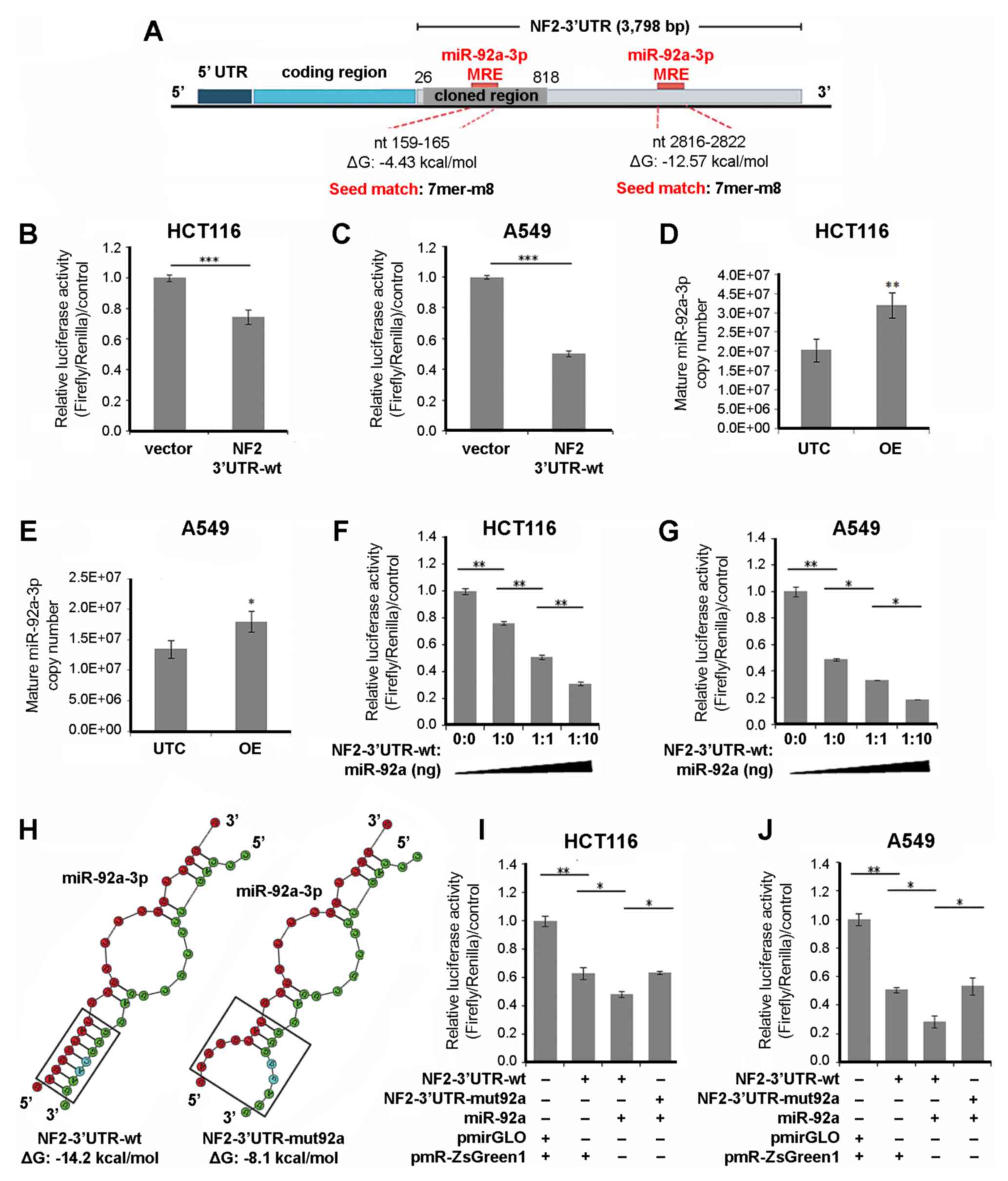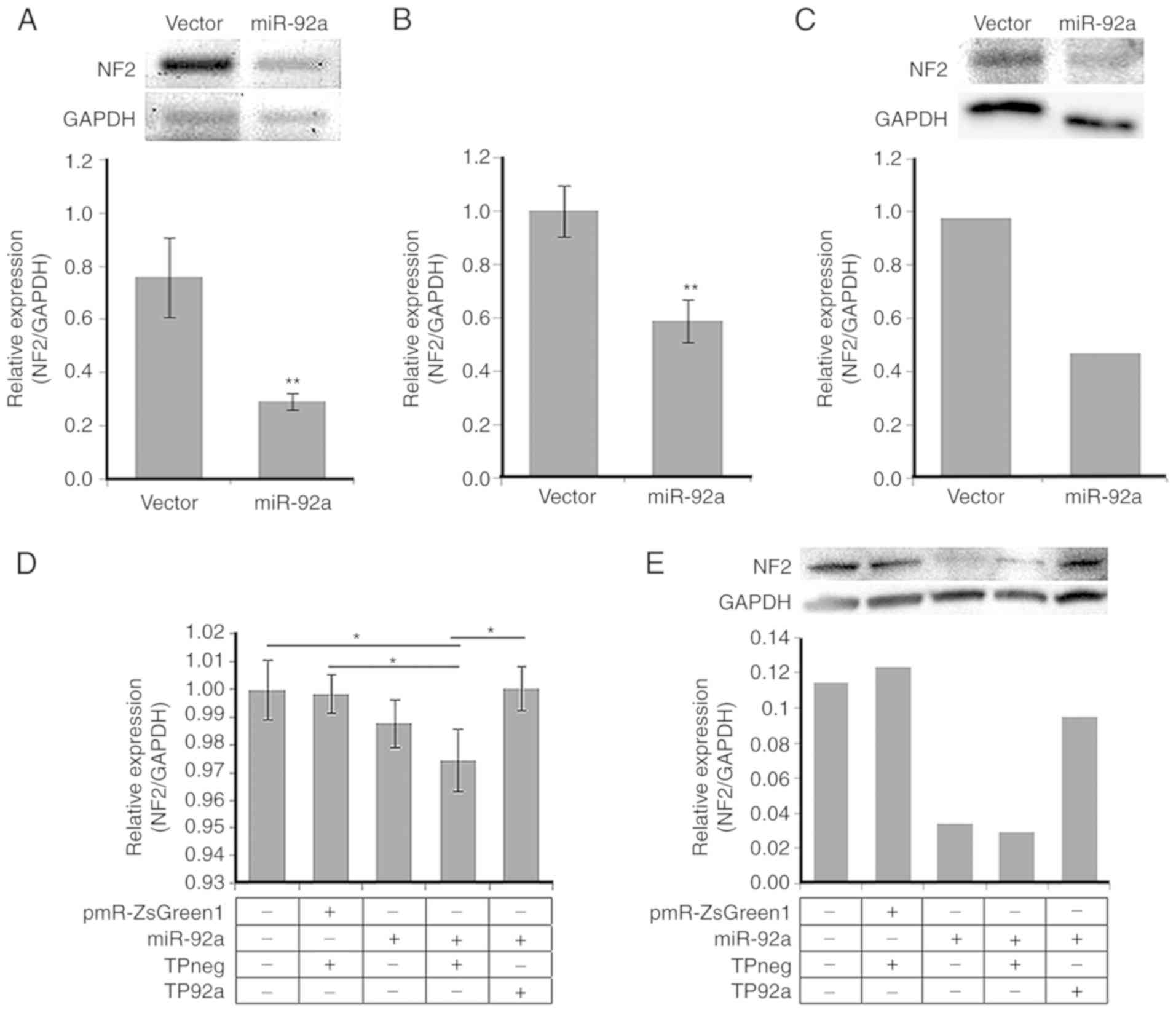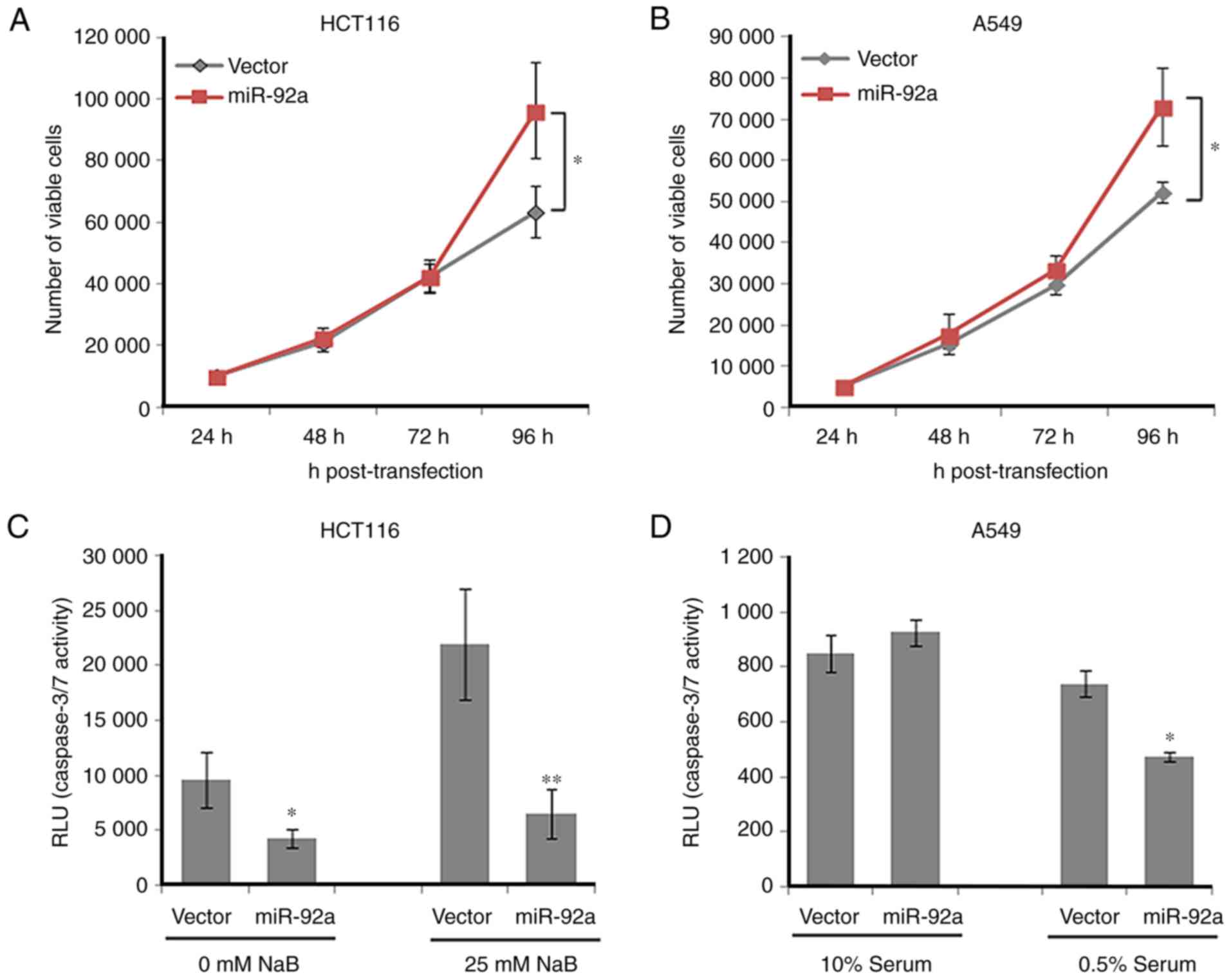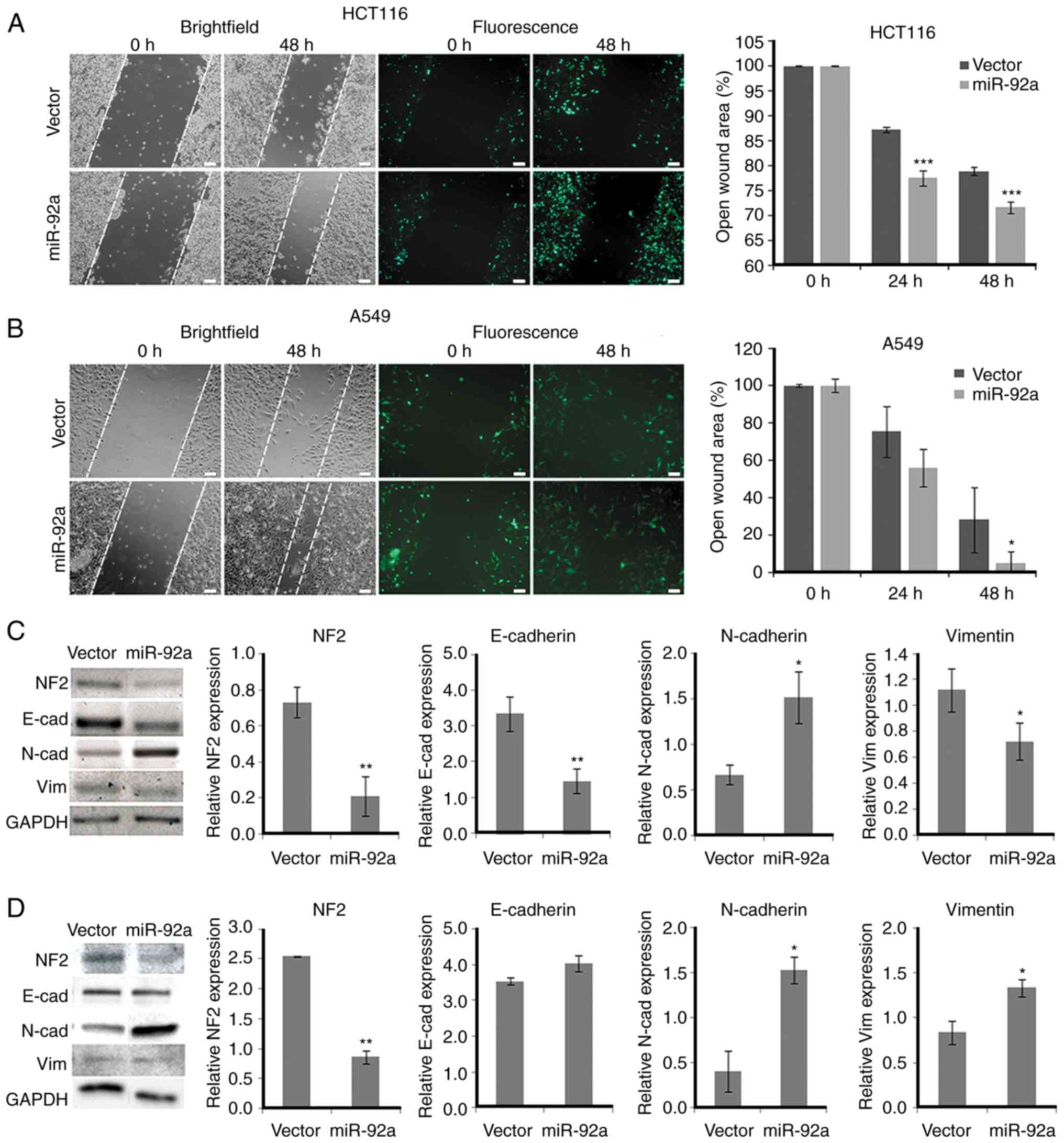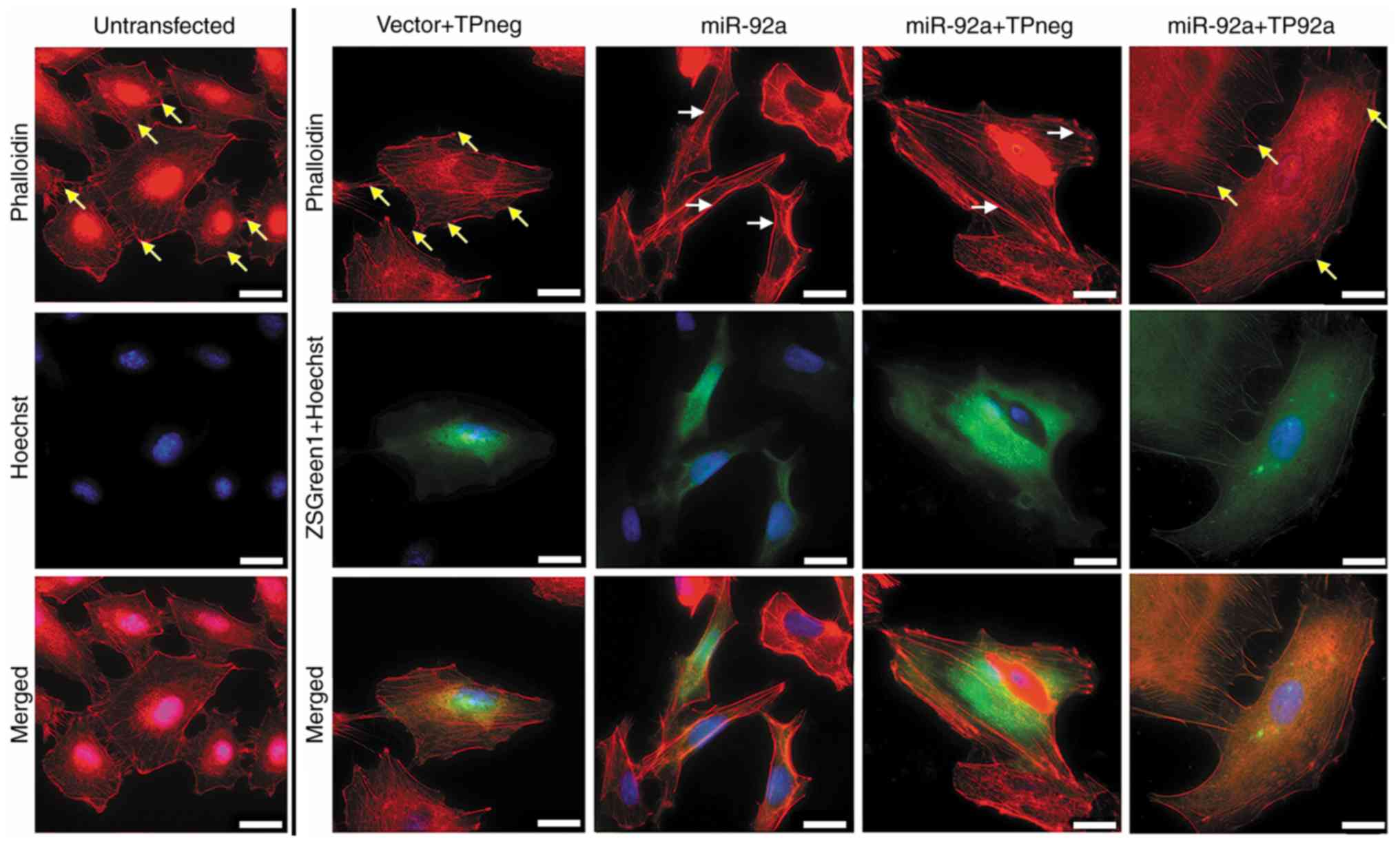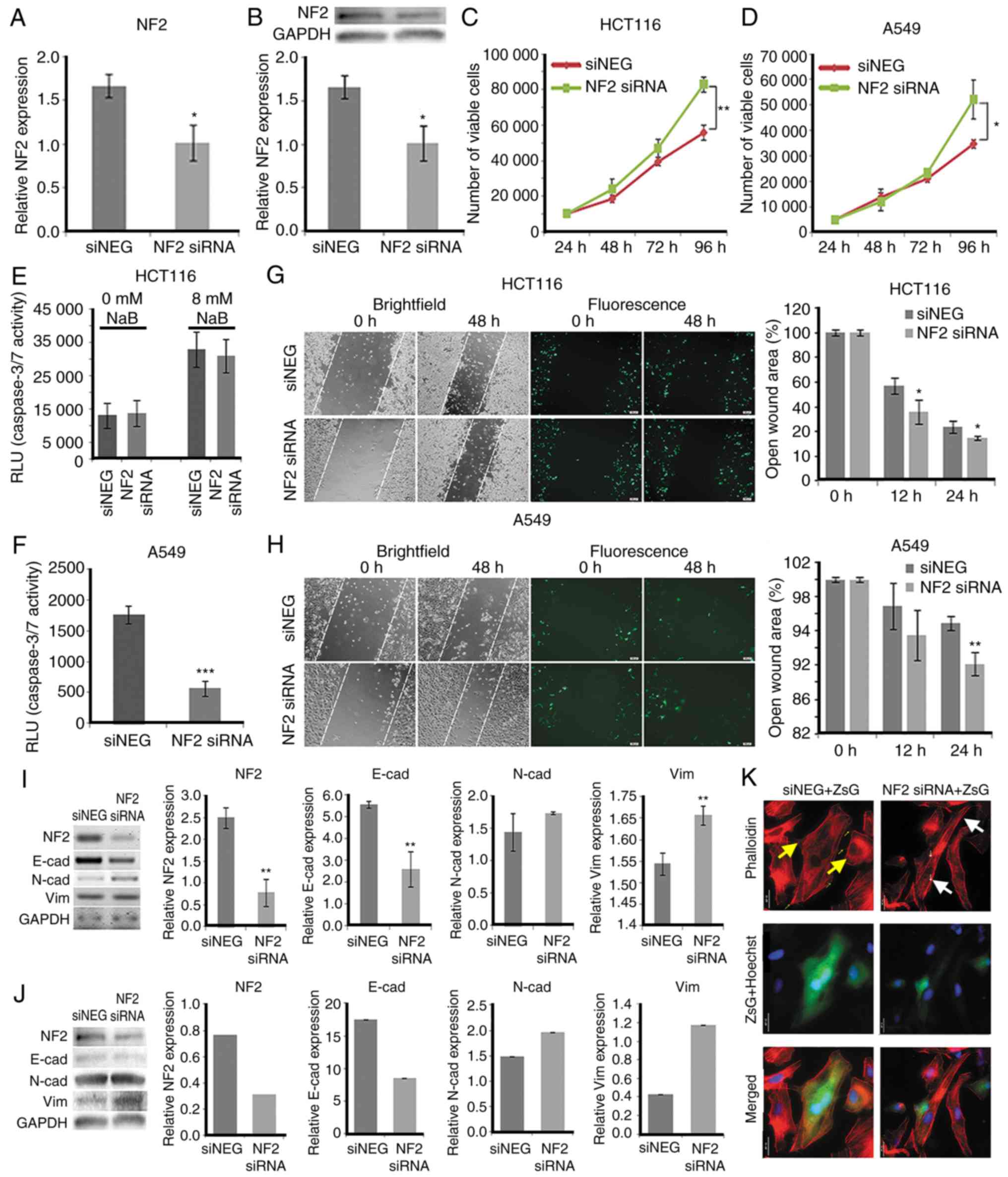|
1
|
Gutmann DH, Hirbe AC and Haipek CA:
Functional analysis of neurofibromatosis 2 (NF2) missense
mutations. Hum Mol Genet. 10:1519–1529. 2001. View Article : Google Scholar : PubMed/NCBI
|
|
2
|
Schroeder RD, Angelo LS and Kurzrock R:
NF2/Merlin in hereditary neurofibromatosis 2 versus cancer:
Biologic mechanisms and clinical associations. Oncotarget. 5:67–77.
2014. View Article : Google Scholar : PubMed/NCBI
|
|
3
|
Curto M and McClatchey AI: Nf2/Merlin: A
coordinator of receptor signalling and intercellular contact. Br J
Cancer. 98:256–262. 2008. View Article : Google Scholar : PubMed/NCBI
|
|
4
|
Morrow KA and Shevde LA: Merlin: The
wizard requires protein stability to function as a tumor
suppressor. Biochim Biophys Acta. 1826:400–406. 2012.PubMed/NCBI
|
|
5
|
Evans DG: Neurofibromatosis type 2 (NF2):
A clinical and molecular review. Orphanet J Rare Dis. 4:162009.
View Article : Google Scholar : PubMed/NCBI
|
|
6
|
Petrilli AM and Fernández-Valle C: Role of
Merlin/NF2 inactivation in tumor biology. Oncogene. 35:537–548.
2015. View Article : Google Scholar : PubMed/NCBI
|
|
7
|
Yoo NJ, Park SW and Lee SH: Mutational
analysis of tumour suppressor gene NF2 in common solid cancers and
acute leukaemias. Pathology. 44:29–32. 2012. View Article : Google Scholar : PubMed/NCBI
|
|
8
|
Čačev T, Aralica G, Lončar B and
Kapitanović S: Loss of NF2/Merlin expression in advanced sporadic
colorectal cancer. Cell Oncol. 37:69–77. 2014. View Article : Google Scholar
|
|
9
|
Morrow KA, Das S, Metge BJ, Ye K, Mulekar
MS, Tucker JA, Samant RS and Shevde LA: Loss of tumor suppressor
Merlin in advanced breast cancer is due to post-translational
regulation. J Biol Chem. 286:40376–40385. 2011. View Article : Google Scholar : PubMed/NCBI
|
|
10
|
Quan M, Cui J, Xia T, Jia Z, Xie D, Wei D,
Huang S, Huang Q, Zheng S and Xie K: Merlin/NF2 suppresses
pancreatic tumor growth and metastasis by attenuating the
FOXM1-mediated Wnt/β-catenin signaling. Cancer Res. 75:4778–4789.
2015. View Article : Google Scholar : PubMed/NCBI
|
|
11
|
Jansson MD and Lund AH: MicroRNA and
cancer. Mol Oncol. 6:590–610. 2012. View Article : Google Scholar : PubMed/NCBI
|
|
12
|
Wang X: Improving microRNA target
prediction by modeling with unambiguously identified
microRNA-target pairs from CLIP-ligation studies. Bioinformatics.
32:1316–1322. 2016. View Article : Google Scholar : PubMed/NCBI
|
|
13
|
Gebäck T, Schulz MM, Koumoutsakos P and
Detmar M: TScratch: A novel and simple software tool for automated
analysis of monolayer wound healing assays. Biotechniques.
46:265–274. 2009. View Article : Google Scholar : PubMed/NCBI
|
|
14
|
Hamaratoglu F, Willecke M, Kango-Singh M,
Nolo R, Hyun E, Tao C, Jafar-Nejad H and Halder G: The
tumour-suppressor genes NF2/Merlin and Expanded act
through Hippo signalling to regulate cell proliferation and
apoptosis. Nat Cell Biol. 8:27–36. 2006. View Article : Google Scholar : PubMed/NCBI
|
|
15
|
Lallemand D, Saint-Amaux AL and Giovannini
M: Tumor- suppression functions of merlin are independent of its
role as an organizer of the actin cytoskeleton in Schwann cells. J
Cell Sci. 122:4141–4149. 2009. View Article : Google Scholar : PubMed/NCBI
|
|
16
|
Zhang G, Zhou H, Xiao H, Liu Z, Tian H and
Zhou T: MicroRNA-92a functions as an oncogene in colorectal cancer
by targeting PTEN. Dig Dis Sci. 59:98–107. 2014. View Article : Google Scholar : PubMed/NCBI
|
|
17
|
Ren P, Gong F, Zhang Y, Jiang J and Zhang
H: MicroRNA-92a promotes growth, metastasis, and chemoresistance in
non-small cell lung cancer cells by targeting PTEN. Tumor Biol.
37:3215–3225. 2016. View Article : Google Scholar
|
|
18
|
Lv H, Zhang Z, Wang Y, Li C, Gong W and
Wang X: MicroRNA-92a promotes colorectal cancer cell growth and
migration by inhibiting KLF4. Oncol Res. 23:283–290. 2016.
View Article : Google Scholar
|
|
19
|
Kawana Y, Ichikawa T, Suzuki H, Ueda T,
Komiya A, Ichikawa Y, Furuya Y, Akakura K, Igarashi T and Ito H:
Loss of heterozygosity at 7q31.1 and 12p13-12 in advanced prostate
cancer. Prostate. 53:60–64. 2002. View Article : Google Scholar : PubMed/NCBI
|
|
20
|
Malhotra A, Shibata Y, Hall IM and Dutta
A: Chromosomal structural variations during progression of a
prostate epithelial cell line to a malignant metastatic state
inactivate the NF2, NIPSNAP1, UGT2B17, and LPIN2 genes. Cancer Biol
Ther. 14:840–852. 2013. View Article : Google Scholar : PubMed/NCBI
|
|
21
|
Lau YK, Murray LB, Houshmandi SS, Xu Y,
Gutmann DH and Yu Q: Merlin is a potent inhibitor of glioma growth.
Cancer Res. 68:5733–5742. 2008. View Article : Google Scholar : PubMed/NCBI
|
|
22
|
Bakker AC, La Rosa S, Sherman LS, Knight
P, Lee H, Pancza P and Nievo M: Neurofibromatosis as a gateway to
better treatment for a variety of malignancies. Prog Neurobiol.
152:149–165. 2017. View Article : Google Scholar : PubMed/NCBI
|
|
23
|
Couderc C, Boin A, Fuhrmann L,
Vincent-Salomon A, Mandati V, Kieffer Y, Mechta-Grigoriou F, Del
Maestro L, Chavrier P, Vallerand D, et al: AMOTL1 promotes breast
cancer progression and is antagonized by Merlin. Neoplasia.
18:10–24. 2016. View Article : Google Scholar : PubMed/NCBI
|
|
24
|
Li M, Guan X, Sun Y, Mi J, Shu X, Liu F
and Li C: miR-92a family and their target genes in tumorigenesis
and metastasis. Exp Cell Res. 323:1–6. 2014. View Article : Google Scholar : PubMed/NCBI
|
|
25
|
Yamada N, Nakagawa Y, Tsujimura N,
Kumazaki M, Noguchi S, Mori T, Hirata I, Maruo K and Akao Y: Role
of intracellular and extracellular microRNA-92a in colorectal
cancer. Transl Oncol. 6:482–492. 2013. View Article : Google Scholar : PubMed/NCBI
|
|
26
|
Zhou T, Zhang G, Liu Z, Xia S and Tian H:
Overexpression of miR-92a correlates with tumor metastasis and poor
prognosis in patients with colorectal cancer. Int J Colorectal Dis.
28:19–24. 2013. View Article : Google Scholar : PubMed/NCBI
|
|
27
|
Chiasson-Mackenzie C, Morris ZS, Liu CH,
Bradford WB, Koorman T and McClatchey AI: Merlin/ERM proteins
regulate growth factor-induced macropinocytosis and receptor
recycling by organizing the plasma membrane: Cytoskeleton
interface. Genes Dev. 32:1201–1214. 2018. View Article : Google Scholar : PubMed/NCBI
|
|
28
|
Ke TW, Wei PL, Yeh KT, Chen WT and Cheng
YW: MiR-92a promotes cell metastasis of colorectal cancer through
PTEN-Mediated PI3K/AKT pathway. Ann Surg Oncol. 22:2649–2655. 2015.
View Article : Google Scholar : PubMed/NCBI
|
|
29
|
Cooper J and Giancotti FG: Molecular
insights into NF2/Merlin tumor suppressor function. FEBS
Lett. 588:2743–2752. 2014. View Article : Google Scholar : PubMed/NCBI
|
|
30
|
Rong R, Tang X, Gutmann DH and Ye K:
Neurofibromatosis 2 (NF2) tumor suppressor merlin inhibits
phosphatidylinositol 3-kinase through binding to PIKE-L. Proc Natl
Acad Sci USA. 101:18200–18205. 2004. View Article : Google Scholar : PubMed/NCBI
|















